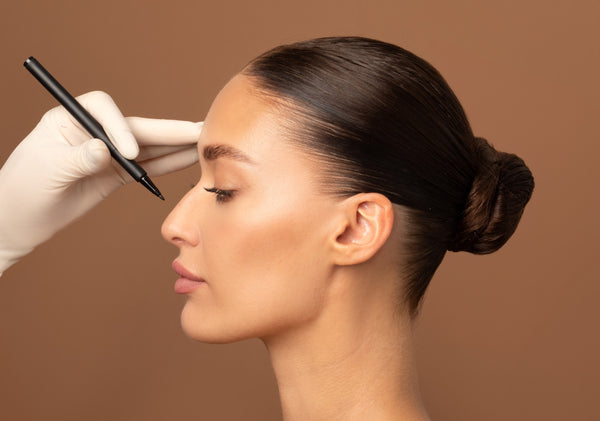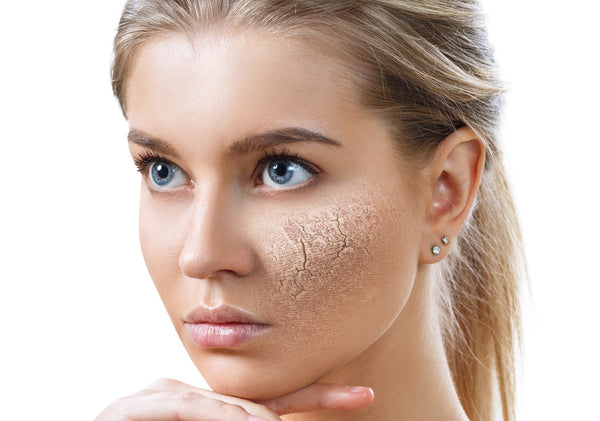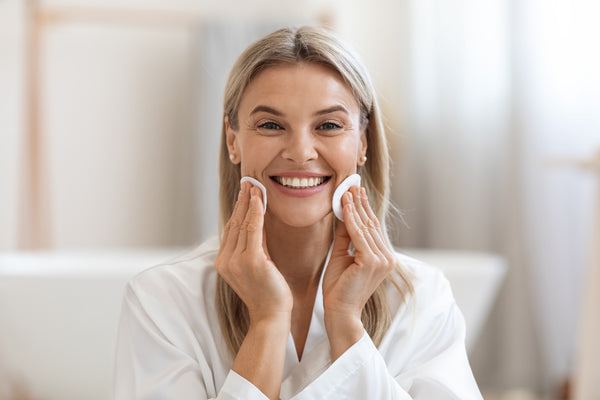Skincare Tips for Micro-Needling Aftercare

Micro-needling is popular for good reasons: this cosmetic treatment can help too slow down the signs of aging, helping to minimize the appearance of fine lines, scars, wrinkles, and more. If you want to maintain youth, then micro-needling can be a great option to add to your other skincare treatments and routines.
Keep in mind that specific steps need to be followed for post-micro-needling care, helping to minimize the risk of complications and optimize overall results from this treatment. Consider these micro-needling tips to protect your skin before, during, and after your appointment:
What Is Micro-needling?
Micro-needling is the process of puncturing the skin with small needles to cause tiny injuries in the upper layer of the skin. Usually, this treatment begins with the application of numbing cream, helping you stay comfortable throughout the treatment.
An aesthetician or cosmetic doctor uses specialized equipment to perform this treatment. Each patient receives a personalized care plan, including the size of needles, frequency of treatments, and other complimentary cosmetic services.
The micro-needling tool is a small pen with many needles on the tip. The aesthetician or doctor will press the pen against your skin and move it across your face. While it is gliding, some needles pierce the surface of the skin, creating thousands of small collagen-producing injuries.
Why Micro-needling?
 Why would a person choose to puncture the skin with needles? When the skin starts repairing these micro-injuries, it stimulates collagen. Boosting collagen production is an effective way to maintain a youthful appearance because collagen keeps the skin supple, firm, and healthy.
Why would a person choose to puncture the skin with needles? When the skin starts repairing these micro-injuries, it stimulates collagen. Boosting collagen production is an effective way to maintain a youthful appearance because collagen keeps the skin supple, firm, and healthy.
Here are some of the incredible benefits patients can receive from micro-needling treatments:
- Heal the appearance of acne scars
- Improve wrinkles and fine lines
- Decrease stretch marks
- Improve pore appearance
- Lighten hyperpigmentation
- Even out skin texture and tone
- Reduce spider veins and broken capillaries
- Create a younger, more youthful appearance
One benefit of micro-needling is that it works with the natural healing functions in the body to stimulate healthy cell regrowth and healing.
What To Do Before Micro-needling
Not only do you need to know about micro-needling aftercare, but there are a few things you should keep in mind before your appointment. First, be careful to avoid any skin irritants for a week before your treatment.
For example, strong skincare treatments (such as retinol) should be avoided. In addition, don't use Accutane for at least 6 months before the micro-needling appointment. Also, be proactive about staying out of the sun before your micro-needling appointment.
On the day of your treatment, arrive at the appointment with a clean face. Don't wear any makeup or other products on your skin.
Tell your doctor about these outbreaks if you have a history of cold sores. Micro-needling can sometimes increase the risk of cold sore development, so you might choose to use an anti-viral cream or medication to prevent this issue.
Additionally, share any other relevant medical history. For example, if you have any skin allergies or keloidal scarring, then your provider should give this information before the treatment.
What to Expect After Micro-needling
Immediately after the appointment, your skin will look red and irritated. Many people compare this feeling to having a mild or moderate sunburn. You might feel like your skin is tighter and warmer than usual.
These skin reactions are typical and expected. You'll start to feel relief after a few hours, but it usually takes a few days before your skin starts looking normal again.
The healing process is different for every person. Talk to your provider to learn more about what you can expect during your recovery time.
Skincare Recommendations Post Micro-needling
 Since you have tiny injuries on the surface of your skin, you can't return to your usual skincare routine right away. Instead, talk to your aesthetician about the products you normally use so you know which ones are safe in the next few days.
Since you have tiny injuries on the surface of your skin, you can't return to your usual skincare routine right away. Instead, talk to your aesthetician about the products you normally use so you know which ones are safe in the next few days.
These are general guidelines for skincare and products for post-micro needling care:
- Cleansing: Prevent infection by keeping the skin clean. Use room-temperature water and a gentle cleanser for the first 72 hours after treatment. Don't use any irritating powered cleansing brushes for at least a week, such as Clarisonic or similar brands.
- Infection Prevention: Remember that you have open wounds on your face, so be careful to avoid introducing bacteria to your skin's surface. For example, avoid touching your face with your hands or anything else. If you need to touch your face, wash your hands thoroughly before coming in contact with your skin.
- Serums: Antioxidant serums can help promote healing after the treatment. These serums are packed with nutrients that are delivered straight to the skin's surface and can reach the deeper layers because of the micro-needling.
- Sunscreen: Avoid the sun for several days after micro-needling. Even if you are going outside for a short time, make sure to apply SPF to protect your skin from UV rays. In addition, sunscreen should be a daily use to prevent the signs of aging, which can be made worse from sun exposure.
Things Not to Do After Micro-needling
Not only do you need to know what to do after micro-needling, but it's just as important to know what NOT to do.
- Active Skincare: Certain products that fall in the "active skincare" category should be avoided for a week during your micro-needling aftercare. Stay away from scrubs, Vitamin C, retinol, hydroxy acids (glycolic acid, salicylic acid, lactic acid, etc.), or anything else irritating the skin.
- Sweating: Avoid any exercise that will cause you to break a sweat, such as cardio or any other active situation. The gym environment can increase your risk of infection since it is filled with bacteria. It's better to let your skin heal before getting in a sauna or working out. Avoid spending too much time in the heat if it's hot outside because it can irritate your skin. Sweating and heat cause the pores to open more, increasing the risk of infection and irritation.
- Touching: Be cautious to avoid touching your face while it is healing. Every time your fingers or other things come in contact with the skin, it is a chance for bacteria to be introduced, which can cause an infection to develop. Also, remember that you have open wounds on your skin that should be left alone.
- Picking: You might notice small scabs or flakes of skin, but avoid picking at these things. Allow the skin to heal naturally without forcing any exfoliation in the first week.
- Anti-inflammatory Medications: Even if you are feeling pain or discomfort, avoid taking any anti-inflammatory medications during the first 24 – 48 hours. Remember that the irritation on the skin is what promotes collagen production and healing processes. So, allow the natural inflammatory processes to occur for the best skin rejuvenation results.
What to Do About Skin Peeling After Micro-needling
Because of the irritation to the skin during the treatment, it's common to experience peeling skin a few days after. Usually, the flaking and peeling started on days 3 – 5, but it varies from person to person.
This peeling is the top layer of skin sloughing off, making way for the newer, fresher skin cells underneath. Allow the skin to slough off naturally. You should only be using a gentle cleanser and moisturizer in the first few days after the micro-needling treatment.
Once your skin is healed a little more, you might use an exfoliating scrub to help remove these skin cells. Or, some people like to schedule a microdermabrasion appointment a week or two after micro-needling. Always follow up exfoliation with a gentle moisturizer to promote healthy skin.
Healing Stages After Micro-needling
 You'll notice that your skin goes through several healing stages after your micro-needling treatment. It's common to have a few minor side effects, but these will go away as your skin continues to heal.
You'll notice that your skin goes through several healing stages after your micro-needling treatment. It's common to have a few minor side effects, but these will go away as your skin continues to heal.
There is a little bit of micro-needling downtime, but most people can return to their normal daily activities quickly. You'll find that the visible signs of micro-needling will fade within 48 hours.
Symptoms of micro-needling immediately after treatment: the skin is usually bright red and flushed, making it appear like you have a moderate sunburn. You might feel a burning or an irritating sensation on the skin because of the micro-injuries that occurred. It's common to have a little bit of swelling on the surface of the skin.
Other symptoms might pop up within the next few days after treatment, such as breakouts, dry skin, flaking, or peeling. Stay consistent with skin care after micro-needling to help these issues heal quickly.
Keep in mind that you will see a visible recovery on your skin within the first few days. But the long-term benefits continue to improve for up to 2 months after the treatment. This is because micro-needling stimulates collagen production, which causes ongoing improvements in the skin long after the initial healing has occurred.
The good news is that downtime after micro needling is minimal compared to other types of more invasive cosmetic surgery procedures. For example, recovery after a facelift can take weeks. Micro-needling is a great alternative that requires minimal downtime and can delay the need for surgery.
A week after a micro-needling treatment, most patients notice that their skin is the most radiating. This is because the healing functions in the skin are in full effect, helping to create the youthful appearance that you desire.
Signs You Need a Doctor After Micro-needling
Severe complications after micro-needling are rare. But it's essential to know the signs of infection in case something goes wrong. These side effects are uncommon but might include:
- Fever higher than 100.4 degrees Fahrenheit
- Continued bleeding
- Nausea
- Green or yellow discharge from the skin
- Hives
Choosing a reputable provider is one of the best ways to avoid these potential side effects. A trusted aesthetician or cosmetic doctor will ensure they are using instruments with proper sterilization, helping to prevent the introduction of bacteria into your skin.
Frequency Recommendations: How Often Can You Do Micro-needling?
One of the most critical micro-needling tips to consider is the frequency of your treatments. Most people don't notice significant changes with micro needling before and after 1 treatment. But remember that the benefits are cumulative, and you won't see the full results for around 2 months. This is because it takes time for the collagen to build and do its work.
Micro-needling should be done regularly, but you can also overdo it as well. Allow your skin time to heal between appointments. The general rule of thumb is that you should wait 4 weeks between treatments because that gives the skin time to turn over all of the skin cells. Also, you can see how your skin reacts to the treatment before deciding to do it again.
Suppose you are using micro-needling to slow aging, then schedule appointments every 2 – 3 months. Most people like to have 4 – 6 treatments in a row to see maximum benefits.
On the other hand, if you have more noticeable issues to correct, your aesthetician might recommend treatments more frequently. For example, micro-needling for scar reduction or treating melasma is often beneficial every 4 – 6 weeks.
The best thing you can do to determine the right frequency of treatment is to talk to your provider about your unique situation. Then, a customized treatment plan can be designed for your individual needs.
Other Skincare Treatments for Anti-aging
 In addition to micro-needling, what other skin treatments are you using to slow the signs of aging? While micro-needling is beneficial, you will see the most results when you pair micro-needling with good skincare habits at home – as well as additional cosmetic services, such as chemical peels, radio-frequency, lasers, and more.
In addition to micro-needling, what other skin treatments are you using to slow the signs of aging? While micro-needling is beneficial, you will see the most results when you pair micro-needling with good skincare habits at home – as well as additional cosmetic services, such as chemical peels, radio-frequency, lasers, and more.
MD Glam is an anti-aging solution that Dr. Cat created. As a board-certified surgeon, Dr. Cat saw a need for quality skincare products that help slow and reverse aging signs – including fine lines, wrinkles, sagging, discoloration, and more. The best way to reach your highest skin potential is by maintaining a consistent skincare routine daily.









